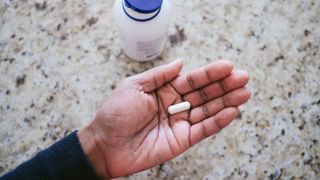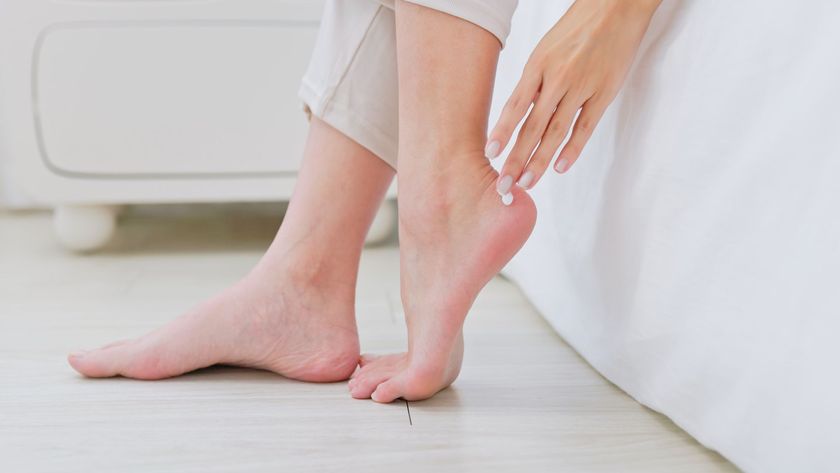
After completing a high-intensity workout, strength training program, or endurance run, soothing sore muscles is a must — but is magnesium the answer?
Post-exercise muscle soreness, aches, or stiffness is common, especially if you’re new to a workout, lift heavier weights, or just returned to exercise. Anyone can experience this soreness, which usually eases within a few days.
If attempting the stairs after a brutal leg-day workout on the squat rack doesn’t sound appealing, techniques like applying heat or ice packs, massage, and gentle stretching (I swear by these hip mobility exercises when I’m feeling tight) could help, but it can be pretty uncomfortable waiting it out.

Catherine Gervacio is an experienced registered dietician and nutritionist. She obtained her bachelor of science degree in Nutrition and Dietetics from the University of Santo Tomas in Espana, Manialla. As part of her clinical dietetics practice, Catherine has provided customized nutrient analysis services and nutrition counseling to her clients. Catherine is also a contributing writer for 'Living.Fit'
We dug in and spoke to Catherine Gervacio, registered dietician and nutrition expert at Living.Fit to swat up on whether magnesium could improve muscle recovery and fend off the dreaded post-workout DOMS (Delayed Onset Muscle Soreness). We already know from when we asked does magnesium help you sleep? that there’s some evidence to support a better snooze, but what about recovery?
Grab one of the best massage guns to tease out muscle tension at home, and read on to find out.
What is magnesium good for?

Magnesium is a mineral responsible for regulating processes in your body like blood pressure, energy production, and (crucially) muscle and nerve function. It’s readily available in foods like dark leafy greens, lean meat, and whole grains, but some might choose to top up with magnesium supplements or take a bath with magnesium-based products.
The Recommended Dietary Allowance (RDA) for adults between 19-51+ years is 400-420mg for men, 310-320mg for women, and pregnant women require more — roughly 350-360mg.
Sign up to get the BEST of Tom's Guide direct to your inbox.
Get instant access to breaking news, the hottest reviews, great deals and helpful tips.
According to the Harvard School of Public Health, magnesium ‘acts as an electrical conductor that contracts muscles,’ as well as ensuring bones, muscles, and nerves function properly, with deficiencies leading to future health problems. The problem is that nearly half of Americans have low magnesium levels, so everyday function and regular exercisers must access enough magnesium daily.
Benefits of magnesium: muscle recovery and performance
Gervacio explains that magnesium aids muscle recovery and performance by “competing with calcium” (preventing its uptake) to prevent spasms and cramps and help them relax, as backed by research. “Calcium binds with certain proteins in the muscles to generate contraction, but magnesium interferes with this process by binding itself to the same proteins, causing the muscles to relax,” she says, adding that “magnesium can often be prescribed to prevent muscle cramps.”
Magnesium also plays a vital role in adenosine triphosphate (ATP) production — a unit of energy produced by the body. It drives processes like muscle contraction and nerve impulse. “This mineral is therefore important for exercise performance,” she adds.
Alongside rest and recovery, it can help feed your muscles with what they need to recover. Moreover, research — like this study by Nutrients — found that magnesium could boost performance like strength, power and jumping ability. That aside, your first choice should always be to find natural sources of magnesium through diet before turning to supplements. But magnesium rubs and Epsom salts containing magnesium sulfate are growing in popularity, too.
How to use magnesium
Magnesium supplementation differs for each person, but Gervacio advises that for muscle recovery alone, magnesium supplements are commonly taken after a tough workout to support healthy muscle function.
Magnesium massage bars and soaps can be massaged and absorbed into the skin, while Epsom salt baths allow you to soak in warm water post-workout. Epsom salt is a natural mineral salt (and a compound of magnesium), yet the Cleveland Clinic states “there are no definitive studies” showing it can absorb through the skin in sufficient amounts.
However, soaking in a warm bath is still a deeply relaxing experience and could reduce stress and soothe muscle tension, alongside ingredients like lavender and oat milk. The Cleveland Clinic adds that this method could also help reduce pain in the neck, back, and shoulder muscles, gently relieving stress-induced headaches or migraines.
Magnesium and restless leg syndrome
“Since magnesium is almost present in all parts of body processes, including nerve function, it may relieve symptoms of restless leg syndrome,” Gervacio says. “Restless leg syndrome is a nervous system condition wherein the body experiences an urge to move the legs.
Ever found yourself unable to settle on the sofa? Well, several studies believe magnesium supplementation could reduce symptoms due to its ability to aid muscle relaxation. Ah, sweet relief.
Before using any magnesium-based products or supplements, you should always check in with a qualified medical professional to ensure it’s safe, especially if you suffer from an existing health condition or ongoing illness. If you’re unsure, seek advice on safe dosages and possible side effects that could be relevant, especially if you’re pregnant.
Got the all clear? Magnesium could be your new best mate for workout recovery.
For other fitness and wellness tips, check out how we tried following a keto diet for a month, some of the best meal kit delivery services, and one writer tried using a massage gun for a week before bedtime here's what happened.

Sam Hopes is a level 3 qualified trainer, level 2 reiki practitioner and senior fitness writer at Tom's Guide. She is also currently undertaking her Yoga For Athletes training course. Sam has written for various fitness brands and websites over the years and has experience across brands at Future such as Live Science, Fit&Well, Coach, and T3.
Having worked with fitness studios like F45 and Virgin Active, Sam now primarily teaches outdoor bootcamps, bodyweight, calisthenics and kettlebells. She also coaches mobility and stretching-focused classes several times a week and believes that true strength comes from a holistic approach to training your body.
Sam has completed two mixed doubles Hyrox competitions in London and the Netherlands and finished her first doubles attempt in 1:11.





















